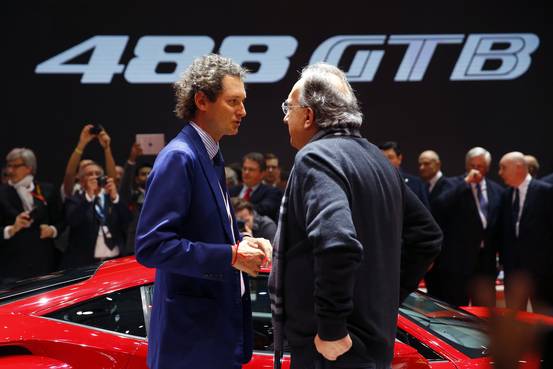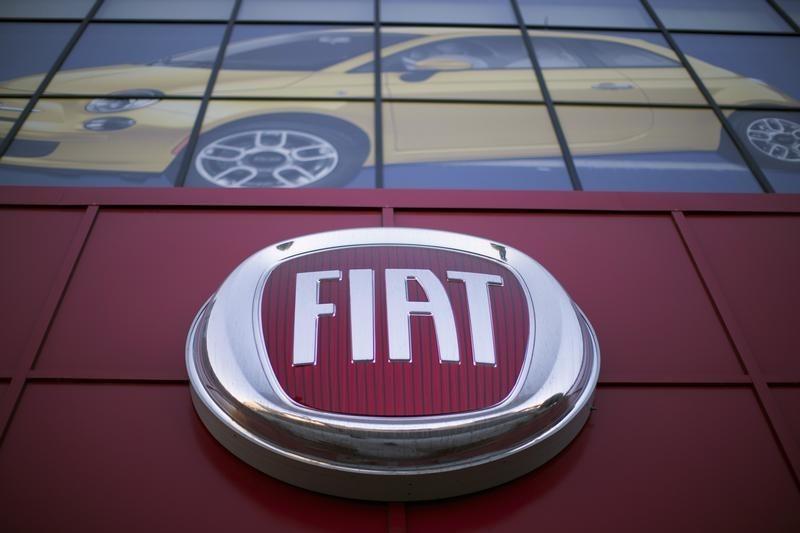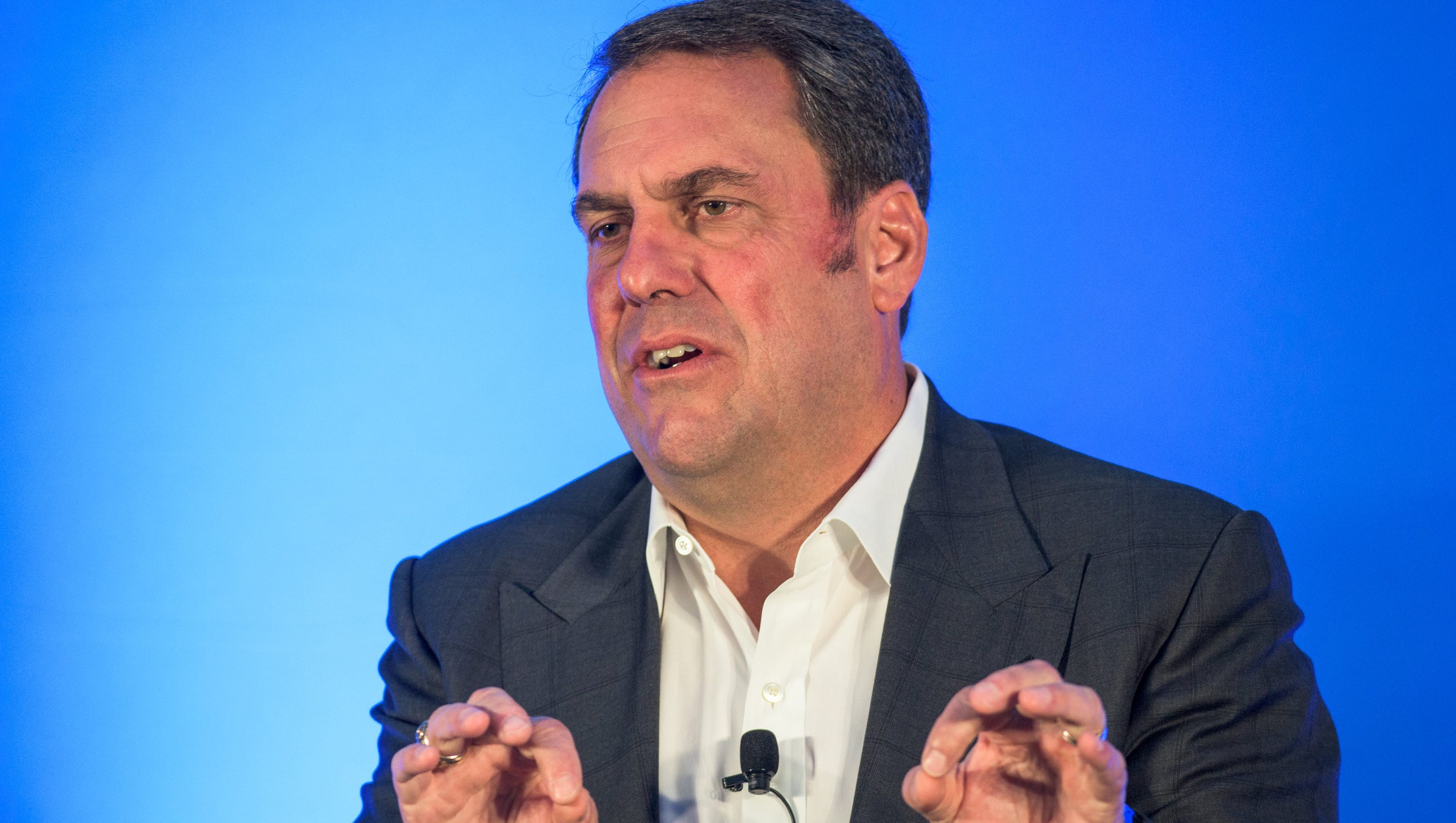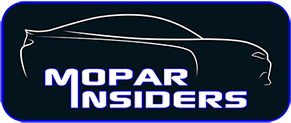In part one, GM's many lies, fairytales, and blatant disregard of logic were displayed from its shabby lawsuit (one the most poorly put together legal document I ever seen out of publicly-traded business GM's size) in which the Detroit media ignored in favor of playing GM's crassness cheerleaders.
GM also suffers from big time from a combination of amnesia, omission and deceit in the lawsuit's baffling chronology.
Unfortunately, such reckless behavior by a once great Automotive power continues in part 2(Here's part 1 The deeply flawed, and inaccurate GM Lawsuit: Detroit media's failure to investigate:Part One | Mopar News and Rumors).
In a long-winded , borderline rambling chronology, GM has amnesia about the original GM-FIAT deal breakup in 2005 labeling the where GM paid FIAT $2 billion (at a time where FIAT needed the money) as ''failing'' for Sergio.
Note this starts GM's version of events regarding a merger between it and FCA. There's more:

 www.wsj.com
All the approaches to GM included John Elkann, but yet GM's lawsuit leaves him out(more on that later). Back to the chronology layout by GM:
www.wsj.com
All the approaches to GM included John Elkann, but yet GM's lawsuit leaves him out(more on that later). Back to the chronology layout by GM:
GM somehow gets itself confuse with ''FCA Group'' and ''FCA N.V''. There's a FCA U.S.LLC which was formerly known as ''Chrysler Group LLC'', and FCA N.V. The other problem is GM screws up ''Capital Junkie'' by leaving out purchasing savings.
The critical thing that ties all the omissions by GM up into a bow are the factors of John Elkann and the timing of the ''Capital Junkie'' presentation (FCA Q1 2015 Conference Call with Wall Street Analysts). Base on media reports after the interaction via email & such technologies, there where no bridge between FCA and GM for dialogue which frustrated John & Sergio to the point of starting planning a proxy fight slated for GM's Annual 2016 Shareholders meeting which would have removed Marry (Barra) Mark (Reuss), the Board directors and others .
Now many may ask '' What is a proxy fight'' well here's a great piece explaining the proxy fight process: Proxy fight - Wikipedia
In FIAT Chrysler's case, it would start non-public discussion between GM shareholders and itself. From then FIAT Chrysler's next goal would be to win unofficial support of at least 3% of GM Shares(percentage wise), or 3% of GM Shareholders of record(for example in club with 1,000 people, winning over 3%=30 members). Once that would be accomplished, those GM Shareholders (either 3% of GM shares, or 3% of total holders of record) would work together with FIAT Chrysler (John & Sergio) to nominate a new slate of GM directors at GM's Annual 2016 Shareholders meeting .
The slate of nominees would have the backing of John Elkann, would fire Mary & other GM Management (Mark Reuss,& others) and championed a FCA-GM Merger agreement. Had the slate of nominees won, GM would had been ran by a interim Management team until the Merger with FCA actually close.
To provide an incentive for GM Shareholders to participate, FCA started to plan to buy GM. By putting a price tag on GM , it highlights GM Shareholders a potential major payday for undertaking such upheaval:

 www.reuters.com
GM's own chronology gets disproven again----GM didn't even bring in the bankers until June with the signing of '' Letter Of Engagement'' and yet claims it seriously consider the spring of 2015 merger proposal by FCA. Normally, a American non-family controlled Publicly Traded Corporation brings in the Bankers very early on to at least start primary due diligence work. The article also display the importance of bring the merger to the UAW attention because of the VEBA trust due to the proxy fight process . Mary Barra didn't bring in the bankers until her meeting with the UAW Leadership, which made her worry about the tension John & Sergio was about unleash on GM's Board Of Directors.
www.reuters.com
GM's own chronology gets disproven again----GM didn't even bring in the bankers until June with the signing of '' Letter Of Engagement'' and yet claims it seriously consider the spring of 2015 merger proposal by FCA. Normally, a American non-family controlled Publicly Traded Corporation brings in the Bankers very early on to at least start primary due diligence work. The article also display the importance of bring the merger to the UAW attention because of the VEBA trust due to the proxy fight process . Mary Barra didn't bring in the bankers until her meeting with the UAW Leadership, which made her worry about the tension John & Sergio was about unleash on GM's Board Of Directors.
However,note how the article brings how buying GM would place enormous financial strain on FCA. This is driven by FCA's highly in-debt balance sheet at the time (more than quadrupling down on debt) which together driving into an ''Oracle'' would be the end of the Proxy fight with hostile takeover bid effort:

 www.bloomberg.com
(Funny how GM's lawsuit cites this piece by Ebhardt, but leaves out Elkann and Buffett parts).
www.bloomberg.com
(Funny how GM's lawsuit cites this piece by Ebhardt, but leaves out Elkann and Buffett parts).
The reputation, the power, the influence of Warren Buffett along with his company Berkshire Hathaway backing GM's Board & Management made a proxy fight an unwinnable event for FCA. The combination of Buffett's opposition , FCA's high debt load (at the time:2015), GM's infamous pension deficits and adding $50/$60/$70/$80 billion of new debt(GM existing debt+ new debt issued to buy GM) on top of it all made the risk not worth the reward for John Elkann so he scrap the takeover/proxy fight.
Despite John scrapping the plans, this lawsuit by GM is motivated by payback for those plans even being created because Mary Barra and Mark Reuss (and others) would have been fired.
John and Mark have vastly different points-of-views on product spending:

 www.detroitnews.com
www.detroitnews.com
(GM would later on scrap the expansion of Warren Tech Center; so much for the jobs :GM stops renovations in Warren, Pontiac)
With such gulf in product decision making, it should be pretty clear that Mark & Marry would be toast given the capital (that funds product spending)of a merged FCA-GM would be led by John. This bring up bad past memories for GM Lifers in GM Management:
 Notice how somethings about GM never changes (''inability to gain Marketshare'' which goes back higher labor cost vs FCA who needed to new hires to meet vehicle demand).
Notice how somethings about GM never changes (''inability to gain Marketshare'' which goes back higher labor cost vs FCA who needed to new hires to meet vehicle demand).
The boardroom coup of 1992 (putting aside the fact Lloyd is Mark Reuss's father) left such of a bad taste in the mouth of GM lifers by breaking the bubble that ''GM is too great to push out Leadership'',the institutional knowledge (of GM) became to rebel against anything resembling coup that might disturb their own enclave. Hence, the push back against Ghosn approach to join the Renault-Nissan Alliance in 2006.The difference is unlike Ghosn, John & Sergio was planning & willing to fight to overthrow GM's Board to fire Mary& Mark (until Buffett's involvements) which angers the RenCen beyond believe.
Opel falling into FCA's hands with the PSA Merger only furthers the angers the RenCen for revenge which is motive for this trash lawsuit.
Because GM was in a race to get the lawsuit filed against FCA before the actually PSA Merger agreement signing, so much of the lawsuit is whining such as Manufacturing process:
But the huge advantage GM got over Chrysler from the bailout (that GM doesn't bring up in the lawsuit) is the Balance Sheet structure:
Finally, the U.S. Government was fine with FIAT-Chrysler-GM eventually becoming one big Automaker:
GM opens itself up at all levels to discovery & cross examination which can make GM,Mark Reuss and Marry Barra look really bad with putting career & self interest ahead of Shareholder interests. GM's only advantage legally is the location of Detroit Jury.
The other issue for GM bring this payback lawsuit because of the takeover/proxy fight is that John Elkann will be a way better position to takeover GM with the merged FCA-PSA than FCA ever was on its own, and can point at Opel as example of improved results that can occur without GM Management.
GM also suffers from big time from a combination of amnesia, omission and deceit in the lawsuit's baffling chronology.
Unfortunately, such reckless behavior by a once great Automotive power continues in part 2(Here's part 1 The deeply flawed, and inaccurate GM Lawsuit: Detroit media's failure to investigate:Part One | Mopar News and Rumors).
In a long-winded , borderline rambling chronology, GM has amnesia about the original GM-FIAT deal breakup in 2005 labeling the where GM paid FIAT $2 billion (at a time where FIAT needed the money) as ''failing'' for Sergio.
RIDICULOUS, Revisionist history (Easy internet search would disprove such nonsense)!As CEO of Fiat since 2004 , Marchionne had long sought a merger with GM . After failing to effect a merger in 2005,Marchionne saw another opportunity after Fiat acquired Chrysler in 2009. “ [ A ]fter fixing Chrysler, lets . . General
Motors and merge them together . Once and for all , let 's straighten out the car industry, creating an American giant that also allows a long-term future for Fiat .
In October 2012, when Fiat owned a significant portion of Chrysler (approximately 59 percent ) and the UAW Trust owned the remainder ,Marchionne wrote to GM' s CEO on behalf of FCA Group proposing a “ comprehensive combination between Fiat, Chrysler, and GM. GM rebuffed this attempt at a combination. But Marchionne remained resolute in his quest to force an FCA-GM Group merger
Note this starts GM's version of events regarding a merger between it and FCA. There's more:
Notice the lack of mentioning John Elkann---a huge omission----take the WSJ:FCA Ignites Operation Cylinder
By 2014, FCA Group had been rejected repeatedly by GM regarding a merger between the two companies. But in early 2015, having successfully consolidated control over Chrysler and positioned FCA NV for merger FCA believed it was in a much stronger position to force a GM merger.
With Marchionne as the lead, FCA schemed that it could effectively take over GM through a merger (code-named “Operation Cylinder)
Marchionne remain CEO of the combined companies , and oversee the largest auto company in the world.
FCA Group initiated its takeover plans in March 2015 when Marchionne,on behalf of parent company FCA NV, wrote to GM 's Board and
management , formally proposing the merger between GM and FCA NV. GM rejected the offer on April 14, 2015, after vetting the proposal with
management, its advisors, and its Board.
Undeterred, two weeks later ,Marchionne went public with an unusual published PowerPoint that he entitled “ Confessions of a Capital Junkie: An insider perspective on the cure for the industry' s value- destroying addiction to capital .”Marchionne promoted the benefits of consolidation as “ too large to ignore . ” The deck claimed nearly $ 5 billion in savings with such a GM /FCA merger based on reduction in investments and R & D with no impact on number employed.
Marchionne enlisted hedge funds and activist investors to support pursuing Operation Cylinder. The Wall Street Journal reported that Marchionne viewed activist partners ''as a means to force consolidation on the fragmented auto industry.”
FCA had reportedly lined up initial commitments to finance a $60 billion cash offer for GM.
Marchionne told the Financial Post that the company’s modeling suggested an FCANV-GM merger was “the most logical combination in the entire industry''
''Mr. Elkann and Fiat Chrysler Chief Executive Sergio Marchionne had approached GM in 2012 and again earlier this year, arguing that steep new technology investments will push the highly fragmented car industry to consolidate. ''

Fiat Scion’s Strategy Toward GM: Patience
John Elkann, chairman of Fiat Chrysler, said in an interview that he isn’t giving up on a partnership with General Motors, arguing the auto industry eventually will have to consolidate.
GM claims it seriously considered merger proposal, but base on how this lawsuit is written---that is seriously doubtful.''Williams relayed that Marchionne had told him the GM Board had not seriously considered the FCA Group merger proposal—an untrue statement.''
GM somehow gets itself confuse with ''FCA Group'' and ''FCA N.V''. There's a FCA U.S.LLC which was formerly known as ''Chrysler Group LLC'', and FCA N.V. The other problem is GM screws up ''Capital Junkie'' by leaving out purchasing savings.
The critical thing that ties all the omissions by GM up into a bow are the factors of John Elkann and the timing of the ''Capital Junkie'' presentation (FCA Q1 2015 Conference Call with Wall Street Analysts). Base on media reports after the interaction via email & such technologies, there where no bridge between FCA and GM for dialogue which frustrated John & Sergio to the point of starting planning a proxy fight slated for GM's Annual 2016 Shareholders meeting which would have removed Marry (Barra) Mark (Reuss), the Board directors and others .
Now many may ask '' What is a proxy fight'' well here's a great piece explaining the proxy fight process: Proxy fight - Wikipedia
In FIAT Chrysler's case, it would start non-public discussion between GM shareholders and itself. From then FIAT Chrysler's next goal would be to win unofficial support of at least 3% of GM Shares(percentage wise), or 3% of GM Shareholders of record(for example in club with 1,000 people, winning over 3%=30 members). Once that would be accomplished, those GM Shareholders (either 3% of GM shares, or 3% of total holders of record) would work together with FIAT Chrysler (John & Sergio) to nominate a new slate of GM directors at GM's Annual 2016 Shareholders meeting .
The slate of nominees would have the backing of John Elkann, would fire Mary & other GM Management (Mark Reuss,& others) and championed a FCA-GM Merger agreement. Had the slate of nominees won, GM would had been ran by a interim Management team until the Merger with FCA actually close.
To provide an incentive for GM Shareholders to participate, FCA started to plan to buy GM. By putting a price tag on GM , it highlights GM Shareholders a potential major payday for undertaking such upheaval:
GM is being advised by Goldman Sachs while FCA is working with UBS on the matter, several sources said, with one adding that Morgan Stanley was also working with GM.
GM’s board rebuffed a merger proposal from the Italian-American carmaker earlier this year and Chief Executive Mary Barra said last week she had no interest in a combination.
But Barra’s rejection has not stopped FCA boss Sergio Marchionne working on a merger plan, according to the sources.
He is lobbying GM investors in an effort to drag the GM board to the negotiating table, they said.
GM signed a letter of engagement with Goldman Sachs earlier this week seeking advice on FCA, one of the sources said.
GM Senior Vice President Tony Cervone did not confirm that his company was retaining Goldman Sachs or Morgan Stanley specifically on the FCA merger approach.
When asked about the matter, he said: “It would be inconceivable for General Motors not to be talking to any number of advisers about normal business operations, but I’m not going to list the issues one by one.”
Spokesmen at FCA, Goldman Sachs and Morgan Stanley declined to comment.
Goldman Sachs, which has assisted Fiat on a number of deals in the past, acted as one of GM’s defence advisers during a February proxy battle.
Meanwhile, FCA is working with Swiss bank UBS on its strategy, while Fiat’s founding Agnelli family, which holds around 30 percent of FCA via investment vehicle Exor is being advised by Lazard, the sources said.
A spokeswoman at UBS confirmed it had an ongoing relationship with FCA, but declined to comment on the General Motors situation.
Lazard declined to comment
GM does not have a single controlling shareholder, and its top investor is Brock Capital Group with an 8.7 percent stake.
Brock Capital is the fiduciary that manages the shares for the United Auto Workers healthcare trust for retired workers. Analysts said the U.S. labour union would view a GM-FCA merger with skepticism because of the potential resulting job losses.''
''Based on expectations that shareholders would demand a 35 percent premium to GM’s market capitalization, FCA would need to pay about $77 billion in an all-stock transaction in the event of a hostile bid, the sources said, adding that GM shareholders would likely demand a substantial payout.''
But FCA would be under enormous financial strain if it decided to pursue a hostile bid, the sources said.
Exclusive: GM and FCA line up financial advisers in merger stand-off
General Motors <GM.N> and Fiat Chrysler Automobiles (FCA) <FCHA.MI> have turned to investment banks for help to deal with a stand-off as FCA seeks to force a merger with its Detroit-based rival, according to sources familiar with the matter.
However,note how the article brings how buying GM would place enormous financial strain on FCA. This is driven by FCA's highly in-debt balance sheet at the time (more than quadrupling down on debt) which together driving into an ''Oracle'' would be the end of the Proxy fight with hostile takeover bid effort:
With Elkann, he sent three exploratory letters from 2013 to 2015 to GM executives, including new CEO Mary Barra. All went unanswered. Marchionne then tried to force Barra to the table by seeking help from activist investors. He even considered a hostile bid. In 2015, Marchionne had lined up initial commitments from European banks to finance a $60 billion cash offer for GM. But conditions weren’t right, as Elkann soon realized: It was too financially risky for indebted Fiat, and Barra had the backing of the U.S. establishment, along with top GM investors, including Warren Buffett. The Oracle of Omaha had discouraged Elkann, suggesting Barra should get her chance to run GM.

The Crisis Fiat Faced as It Lost an Indispensable Leader
A revealing excerpt on what the company risked with the sudden demise of CEO Sergio Marchionne.
The reputation, the power, the influence of Warren Buffett along with his company Berkshire Hathaway backing GM's Board & Management made a proxy fight an unwinnable event for FCA. The combination of Buffett's opposition , FCA's high debt load (at the time:2015), GM's infamous pension deficits and adding $50/$60/$70/$80 billion of new debt(GM existing debt+ new debt issued to buy GM) on top of it all made the risk not worth the reward for John Elkann so he scrap the takeover/proxy fight.
Despite John scrapping the plans, this lawsuit by GM is motivated by payback for those plans even being created because Mary Barra and Mark Reuss (and others) would have been fired.
John and Mark have vastly different points-of-views on product spending:
But Reuss focused his address here at home where Motor City automakers are investing billions in a sci-fi future — GM alone is in the middle of a $1-billion, 2,600-job expansion of its Warren Tech Center. He said anyone with a stake in Metro Detroit’s signature industry needs to focus on education.
“By my count, that’s just about everybody,” he said. “We have to meet or beat the talent levels in Silicon Valley and other technology hubs around the world.”

GM exec: Detroit area’s ‘talent deficit’ cost it Amazon
GM product boss Mark Reuss says the autonomous vehicle revolution will bypass Detroit, too, unless talent is developed
https://exor.com/sites/default/files/2019/page-documents/letter_to_shareholders_2.pdf''Ayn Rand reminds us that “We can ignore reality but we cannot ignore the consequences of ignoring reality”, a sentiment which is very appropriate for FCA given the many changes the car industry is facing and the necessity to distinguish between sci-fi future scenarios and more realistic ones in making capital allocation decisions.''
(GM would later on scrap the expansion of Warren Tech Center; so much for the jobs :GM stops renovations in Warren, Pontiac)
With such gulf in product decision making, it should be pretty clear that Mark & Marry would be toast given the capital (that funds product spending)of a merged FCA-GM would be led by John. This bring up bad past memories for GM Lifers in GM Management:
Reuss' father, Lloyd, lost his job as GM's president in a 1992 boardroom coup.
GM demoted Lloyd Reuss to executive vice president in charge of new vehicles and systems, and it fired Chairman Robert C. Stempel in "an unusual display of power by outside directors," according to a New York Times article on the upheaval. GM named John (Jack) F. Smith Jr. as Lloyd Reuss' replacement.
Stempel and Lloyd Reuss rose through the ranks together. In fact, in 1986, both men were named the same day to the corporation's executive committee and board, the Times article said.
But Lloyd Reuss' short tenure in the job was due, in part, to GM's inability to gain market share even though it had several new 1992 models and a "Buy American" enthusiasm among consumers. GM reported a $4.45-billion loss in 1991

GM names Mark Reuss president as it reshapes the company
Reuss succeeds Dan Amman as president -- and follows in the footsteps of his father.
www.freep.com
The boardroom coup of 1992 (putting aside the fact Lloyd is Mark Reuss's father) left such of a bad taste in the mouth of GM lifers by breaking the bubble that ''GM is too great to push out Leadership'',the institutional knowledge (of GM) became to rebel against anything resembling coup that might disturb their own enclave. Hence, the push back against Ghosn approach to join the Renault-Nissan Alliance in 2006.The difference is unlike Ghosn, John & Sergio was planning & willing to fight to overthrow GM's Board to fire Mary& Mark (until Buffett's involvements) which angers the RenCen beyond believe.
Opel falling into FCA's hands with the PSA Merger only furthers the angers the RenCen for revenge which is motive for this trash lawsuit.
Because GM was in a race to get the lawsuit filed against FCA before the actually PSA Merger agreement signing, so much of the lawsuit is whining such as Manufacturing process:
The path for World Class Manufacturing was put into the works with the U.S. Government as terms of Chrysler's Bankruptcy. GM is basically stating admitting ''GMS'' is inferior.For example, at the time of the 2011 CBA, Chrysler and the UAW (through Iacobelli and Holiefield) documented their joint commitment to WCM, which was a “full fledged partnership.” They agreed that it was “of critical importance that WCM be jointly implemented systematically and fully in order to operate successfully and thereby position [Chrysler]and the [UAW]firmly among the winners of the global automotive manufacturing community. GM has been denied this commitment to the substantial equivalent of WCM.
But the huge advantage GM got over Chrysler from the bailout (that GM doesn't bring up in the lawsuit) is the Balance Sheet structure:
The balance sheet makes GM lawsuit even more ridiculous given how FIAT and Chrysler together had to earn its way to a strong balance sheet, while GM with Ignition Switch scandal+ Autonomous +Non-China International struggles +Stock Buybacks have significantly decrease the OEM's balance sheet.As Harry and his team crunched numbers for GM's financial restructuring over the next days, they discovered a large flaw in our plan. In overhauling Chrysler, we ''invested'' the $8 billion of new-payer money almost entirely as debt on the new company's balance sheet. We'd assumed we would do the same with GM. But GM, they realized, was going to require far more money than Chrysler, even allowing for the automakers' difference in size. Harry's preliminary estimates showed that Shiny New GM would need at least $30 billion, on top of the $15.4 billion the Treasury had already put in. Yet that much new debt would leave the company groaning under a potentially unmanageable load of fixed liabilities--much like old GM.
Harry couldn't find a way out of this. After wrestling with the problem, Harry bounded into my office one morning waving a sheaf of papers. ''We've got to equitize most of our debt.'' I immediately understood the Wall Street shorthand: he was proposing that instead of lending most of the money to GM as we had done with Chrysler, we infuse the bulk of our money into GM by buying stock.
In his crusade to cut GM's debt, Harry decided we should persuade the UAW to convert its entire $20 billion claim into GM stock-- by which he meant not relatively safe and interest-bearing preferred stock, but mostly common shares. His view was that this would fully align the retirees(and the workers as future retirees) with the health of the company and help create a better partnership between management and labor than had existed in the past. It would result in a far better balance sheet for GM, increasing the probability of success-- a win-win proposition. (He was so excited about his idea that at one point he started explaining the difference between preferred and common stock to me!)This would be a much dramatic change than what had been negotiated with Chrysler, where half the claim was converted to stock. Fritz, who was all for union concessions, thought the idea ludicrous and told Harry so-- in essence, we were asking the union to bet its retirees' ability to pay their family doctor bills on the success of Shiny New GM. But Harry got Fritz and Ron Bloom to agree to give it a try.
The deal gave GM substantially more financially flexibility than Chrysler had, and far and away the healthiest balance sheet among the Detroit three
Finally, the U.S. Government was fine with FIAT-Chrysler-GM eventually becoming one big Automaker:
Bottom Line In My Conclusion: This lawsuit by GM is overhyped, over-drama, and oversold by GM '''Free Alcohol'' Media friends. As both parts prove, GM suffered no labor disadvantage other than a labor cost disadvantage done by itself. Since Bankruptcy ,GM has continue to lose marketshare despite U.S. SAAR growing back to 17 million which cause negative pressure on vehicle demand, and negative pressure on factory utilization. Hence GM doesn't need to hire new lower-paid workers outside of standard retirement-related attrition. Chrysler business since bankruptcy needed to hire just to get back to operational state, follow by the recovery in Chrysler's marketshare because of demand for Chrysler's/FIAT Chrysler's vehicles so of course will have lower labor cost than GM.Deese offered an argument that resonated with Larry: Given the uncertainty in our economy, it was better to invest $6 billion for a meaningful chance that Chrysler would survive than invest several billions dollars in its funeral. (The hole in this argument was that we could invest $6 billion and still pay for the exact same funeral). He and other defenders also extolled the potential benefits of the Fiat alliance and of preserving ''optionality'' for later moves such as an eventual merger with GM.
GM opens itself up at all levels to discovery & cross examination which can make GM,Mark Reuss and Marry Barra look really bad with putting career & self interest ahead of Shareholder interests. GM's only advantage legally is the location of Detroit Jury.
The other issue for GM bring this payback lawsuit because of the takeover/proxy fight is that John Elkann will be a way better position to takeover GM with the merged FCA-PSA than FCA ever was on its own, and can point at Opel as example of improved results that can occur without GM Management.
